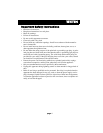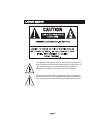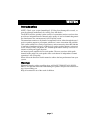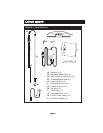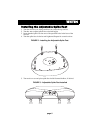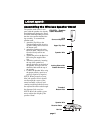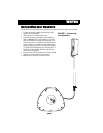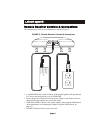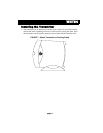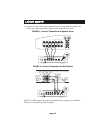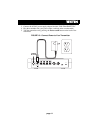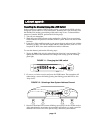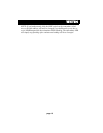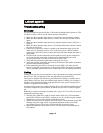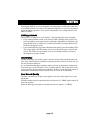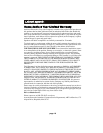
WHT24
page 15
In the highly unlikely event your neighbor was attempting to re-link at the same time,
it is possible to link your system to his. Should this happen, or if you have any doubts,
repeat the linking operation. Your system will generate a new, unique address each
time it is linked.
Linking problems
The system is designed to be "user friendly." The following hints may be helpful:
• If you cannot establish a link, or the receiver LED is flashing from green to red,
you are probably out of range from the transmitter. Depending on conditions, the
range should be up to 150 feet. In a normal frame house, the range should easily
be 50 feet through two walls.
• If you unintentionally toggle the transmitter link switch, ignore the flashing LED.
The system address will not change unless you deliberately press a receiver link
switch. The LED will stop flashing in one to two minutes and there will be no
interruption to program content.
Interference
The RF technology used in this system is the most robust audio streaming link avail-
able. Even in the hostile environments sometimes present in offices or stores, the sys-
tem will operate trouble free.
It is recommended that the transmitters and/or receivers be located two to three feet
from microwave ovens, Ethernet LANs, or cordless phones. The system will coexist
easily with these devices under these guidelines. If there is doubt about the source of
interference, momentarily disable a device close to a receiver or transmitter.
Poor Sound Quality
The most common cause of poor sound quality is incorrect input signal level to the
transmitter.
When the speaker input is selected the full-scale input is 14.5 VRMS (equivalent to 50
watts into 4 ohms).
When the RCA (pre-out) input is selected, the full-scale input is 3.5 VRMS.



